Share the post "Unwritten Rules of Donning a Cowboy Hat: Unveiling the Secrets"
Ever wondered about the unwritten rules of donning a cowboy hat? It’s not just a piece of fashion; it’s a symbol steeped in tradition and superstition. From ensuring a snug fit to avoiding new gear on a rodeo day, there’s more to wearing a cowboy hat than meets the eye.
Did you know your cowboy hat could be a reservoir of excellent luck? Or that adding a talisman to your hat has historical significance? And there’s a whole list of dos and don’ts if you’re a rodeo athlete. Buckle up, as we explore the fascinating world of cowboy hat etiquette and lore.
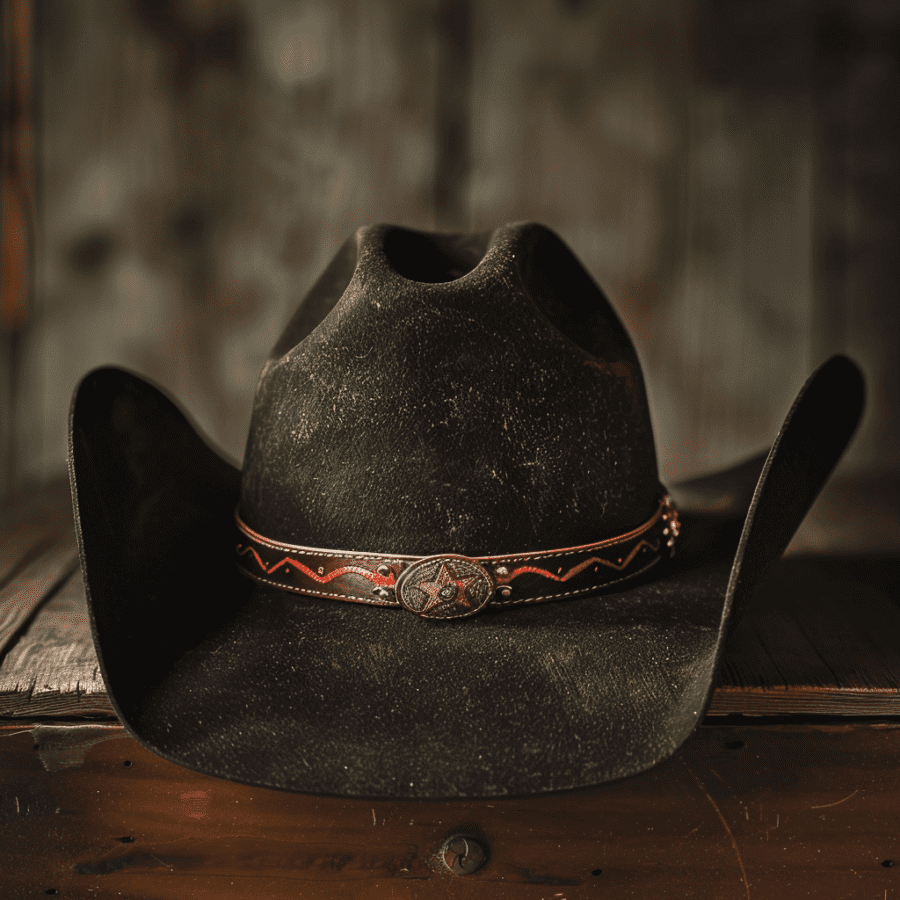
Understanding the Fundamentals of Cowboy Hat Etiquette
Even though being a staple in western attire, the cowboy hat isn’t merely a style statement; it’s a tradition steeped in history and unwritten rules. Here’s how you navigate through those essentials practices.
When to Wear and When to Remove Your Cowboy Hat
There’s a rhythm, a cowboy cadence that commands respect when it comes to wearing and removing your cowboy hat. Indoors or outdoors, formal or informal, every scenario whispers a different rule.
- Embrace the spirit of chivalry by gracefully lifting your hat when meeting someone new.
- Echo the respect during solemn moments—prayer, meeting a person for the first time, or attending indoor funerals or weddings—by removing your hat.
- Engage in the camaraderie shared during patriotic events by simply removing your hat during national anthems or pledge of allegiance.
- Boldly sport darker colored hats —browns, grays, blacks—are on formal occasions, adding the perfect touch of class elegance.
But when you’re out under the big Western sky, working or riding horses, your cowboy hat is more of a hardworking ally than a fashion piece. While dipping in and out of those fields and barns, let your hat sit right on top of your head, working alongside you.
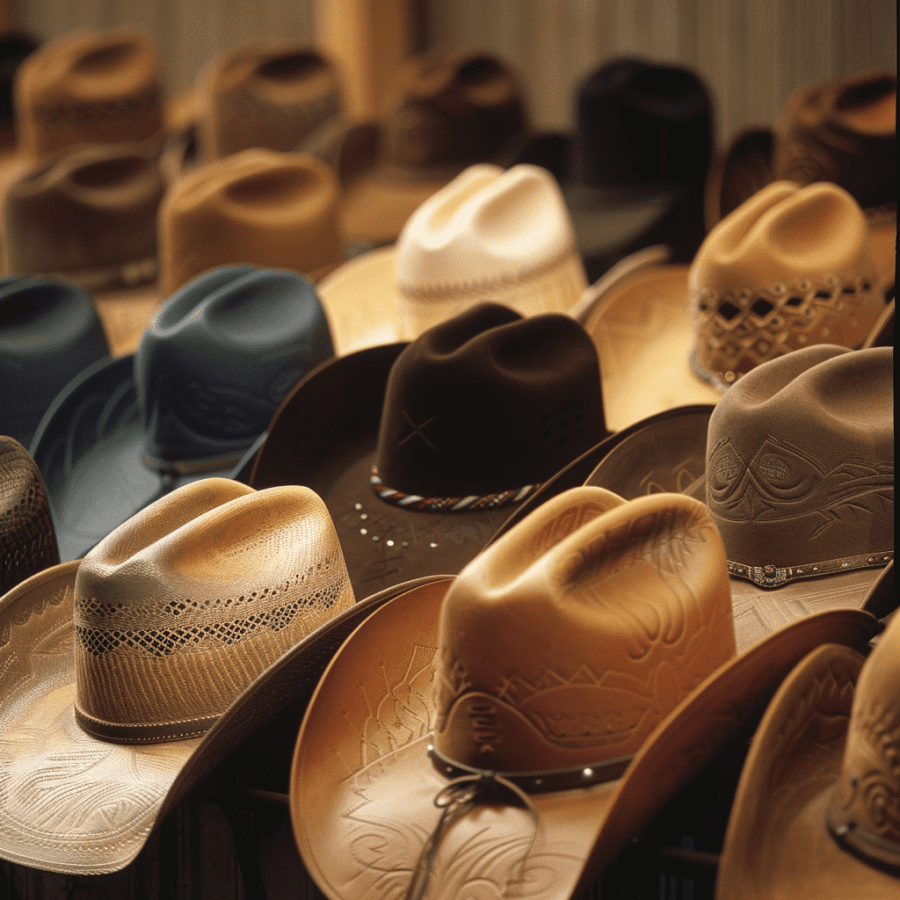
The Importance of Choosing the Right Hat Size
Sizing matters! An ill-fitted hat has no place in a cowboy’s world. Too tight, it becomes a discomfort; too loose, you’re at the mercy of the winds. It’s easy to be the joke of the town with a hat either squishing your head or too big it becomes your own personal wind sail. So sizing, right from the crown to the brim, plays a crucial role.
Your best bet for a well-fitted hat starts with a simple cloth tape measure. Measure the circumference of your head approximately a half inch above your ears and across your forehead. Most cowboy hats use sizing increments of 1/8, so if you’re stuck in between, round up;
Adult Hat Size Chart
- Small: 6 3/4 to 6 7/8
- Medium: 7 to 7 1/8
- Large: 7 1/4 to 7 3/8
- X Large: 7 1/2 to 7 5/8
- XX Large: 7 3/4 and up
Here’s how you know it’s an excellent fit:
- The hat sits level and snug, without causing pressure points.
- There’s a bit of room between the top of your head and the crown of the hat.
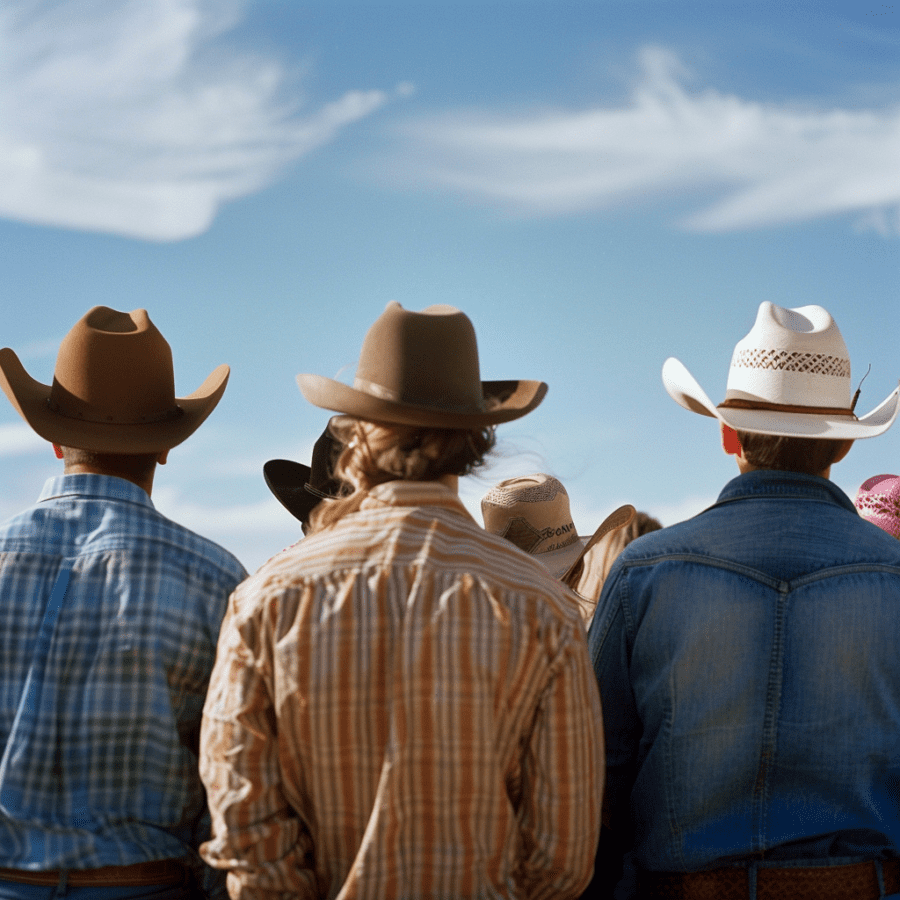
Seasonal Considerations for Cowboy Hats
When it comes to wearing cowboy hats, the season plays a pivotal role. The choice between straw and felt cowboy hats, and the specific time to make a transition from one to the other, significantly influence the wearer’s comfort and appearance.
Choosing Between Straw and Felt Cowboy Hats
Just as your wardrobe adapts to the changing seasons, so should your cowboy hat. In figuring out when to don a cowboy hat and which type to wear, understanding the qualities of both felt and straw cowboy hats becomes imperative.
Felt cowboy hats, often crafted with wool, beaver, or rabbit fur, are renowned for their durability and excellent shape retention. Their key characteristics include:
- Suitable for cooler climates
- Perfect wear for formal occasions
In contrast, straw cowboy hats, woven intricately with straw, are your ideal summer companions:
- Great for hot weather
- The more casual appeal adds an easy-going vibe to your look
When to Transition from Straw to Felt
Wearing a felt hat in the heat of summer might provoke some chuckles, marking you as an easy spot for ‘Cowboy hat newbie’ title. Felt hats in July can leave your head sweltering. Once the weather starts to heat up, it’s time to switch to straw hats. As fall rolls in and the air turns crisp, transition into felt hats, perfect for the chill.
Next time you’re out and about, carry your cowboy hat with the same confidence John B. Stetson did back in 1865, ensuring you follow not only the cowboy hat etiquette but also the unwritten rules tied to the seasons.
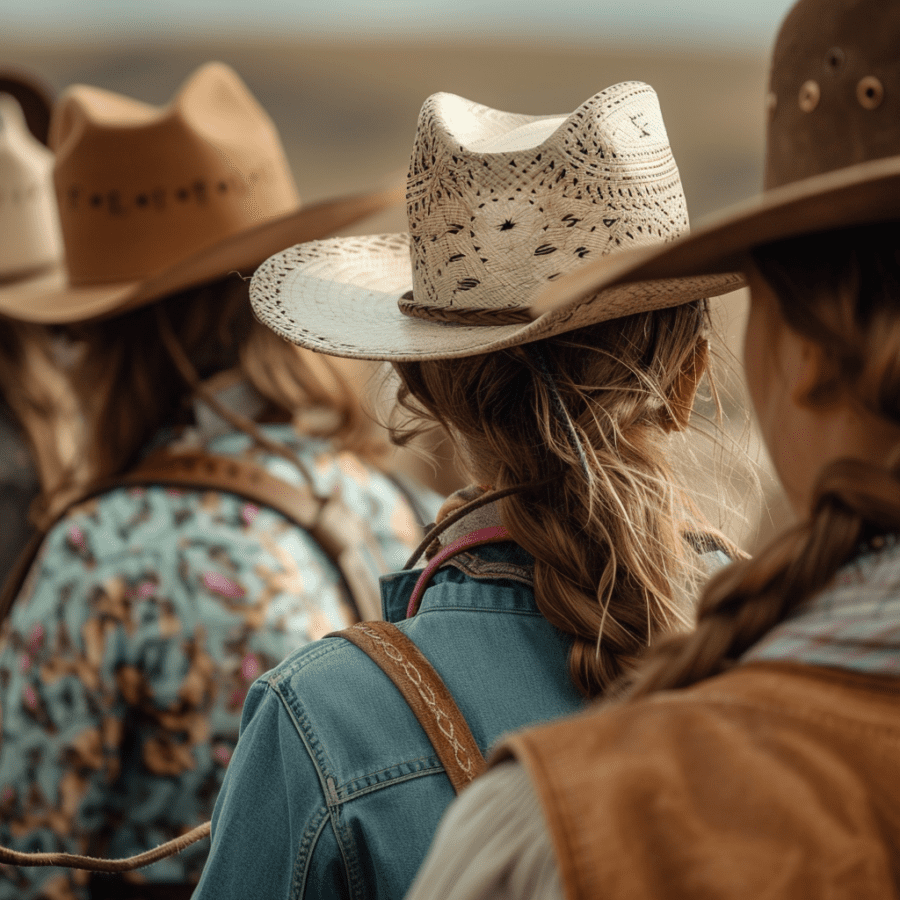
Respect and Superstitions Surrounding Cowboy Hats
Besides the practical uses and style implications, cowboy hats carry an array of legends and superstitions that add to their charm and reverence. It’s essential to familiarize yourself with these customs to wear a cowboy hat correctly in any setting.
Proper Placement and Care of Your Hat
Correct handling of a cowboy hat is a critical aspect of cowboy etiquette, protecting your hat’s shape, and, according to folk tales, your luck. Here’s how you can do it:
- Upside Down Storage: When not in use, it’s paramount that your cowboy hat is placed upside down. This practice preserves the hat’s contour and, as old cowboys assert, stops any excellent luck from falling out.
- Avoid the Bed: A prevalent superstition advises against leaving your hat on a bed. Some connect this belief to hats historically placed on coffins. Others deduce it’s simply about stopping lice spread between cowboys in the old days. One point all agree on is, if your hat ends up on a bed, you’ve got to spit in it, throw it down, and stomp out any potential bad luck.
- Adding Adornments: If you’d like to enhance your cowboy hat with a decoration, place it on the left. This tradition hails from the sword-wielding times when nothing should obstruct the right, or dominant, hand.
Common Myths and Superstitions
Cowboy hats retain a fair share of myths and superstitions that add an intriguing narrative to their identity. Here are some for your amusement:
- Unwanted Bedfellows: Never set your cowboy hat on a bed. This superstition stems from the belief that such action fosters arguments, bad luck, injuries, or even death.
- New Gear Caution: Folklore cautions against wearing new cowboy hat, boots, clothing, or any gear on a hunting trip or rodeo competition. Some believe it jeopardizes your chances of success.
- Superstitious Tidbits: If you’re a rodeo athlete, traditional wisdom suggests avoiding yellow attire, chicken before competing, and carrying coins in the pocket, all said to affect your performance and earnings.
Embrace these unwritten rules, and you’ll be well versed in the rich folklore surrounding cowboy hats. The hat isn’t merely an accessory, after all. It’s steeped in tradition, respect, and radical superstitions that make every cowboy hat a distinct symbol of a vibrant history and culture.
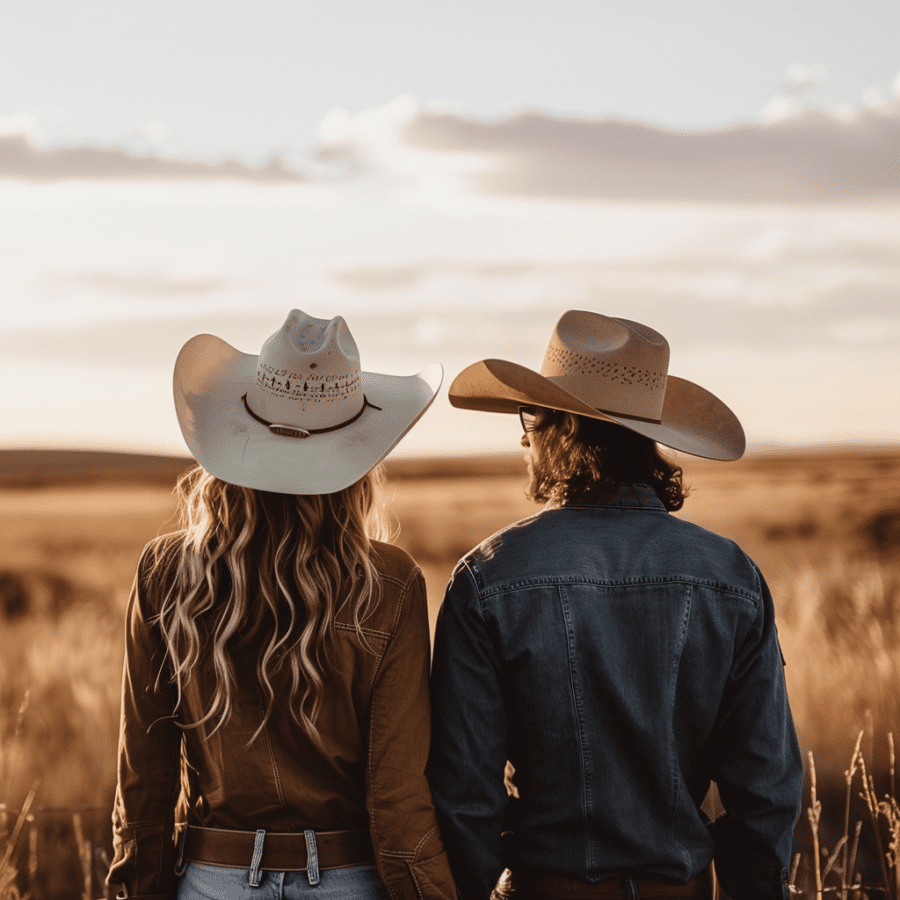
Handling and Wearing Your Cowboy Hat Correctly
Carrying your cowboy hat with respect and understanding its unspoken etiquette is crucial. Let’s explore the basics:
Correct Ways to Tip and Hold Your Hat
Tipping your hat is more than just a gesture; it’s a way of acknowledging someone or displaying courtesy. It’s a subtle detail that can speak volumes about your understanding of cowboy etiquette. Here are the key points:
- Meet: Adjust your hat when meeting someone new. A slight raise of the hat by holding the crown indicates respect and friendly intentions.
- Greet: If you’re being introduced, it’s polite to lift your hat slightly off your head. Your lifting degree should match the seriousness of the situation—higher for formal events, lower for casual ones.
- Pass: Passing a lady on the sidewalk? Tip your hat to show respect! This simple act can say a lot about your manners.
In similar fashion, holding your cowboy hat follows certain unspoken guidelines:
- Handle it by the brim: Never touch the crown of someone else’s hat. Cowboys consider this a sign of disrespect. Always hold it by the brim.
- In your arms: When your hat isn’t on your head, hold it with the inside of the hat towards your body. It’s an elegant way to show that you know what you’re doing.
- Remove it, right? When you take off your hat, use the front and back of the brim, not the crown. Remember, the crown is sacred!
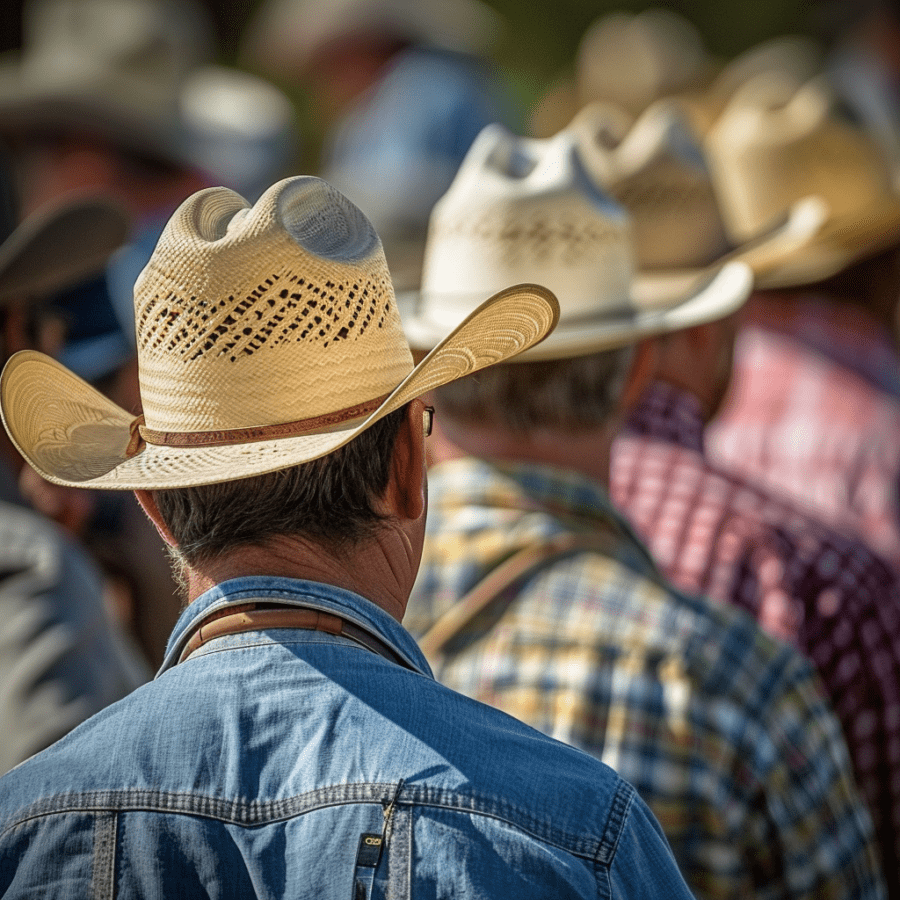
Setting Down Your Hat the Right Way
Believe it or not, there’s a right and wrong way to set down your cowboy hat. Here are some tips:
- Upside Down: Whenever you’re not wearing your hat, place it upside down. This practice preserves the shape of the hat’s brim.
- Avoid Beds: Never place a cowboy hat on a bed; that’s bad luck in the cowboy world. Choose a flat surface, specifically a clean, dry spot where the hat won’t be disturbed.
- Use a Hat Stand: Although not a must, if you want to go the extra mile, a hat stand is an excellent investment. It not only displays your hat but also helps maintain its shape.
Learning these nuances of cowboy hat etiquette not only earns you respect among cowboys but also enriches your experience of wearing this iconic accessory.
Share the post "Unwritten Rules of Donning a Cowboy Hat: Unveiling the Secrets"
Christian Linden is a seasoned writer and contributor at Texas View, specializing in topics that resonate with the Texan community. With over a decade of experience in journalism, Christian brings a wealth of knowledge in local politics, culture, and lifestyle. He holds a Bachelor's degree in Communications from the University of Texas. When he's not writing, Christian enjoys spending weekends traveling across Texas with his family, exploring everything from bustling cities to serene landscapes.











